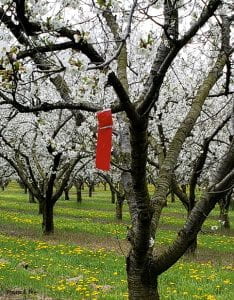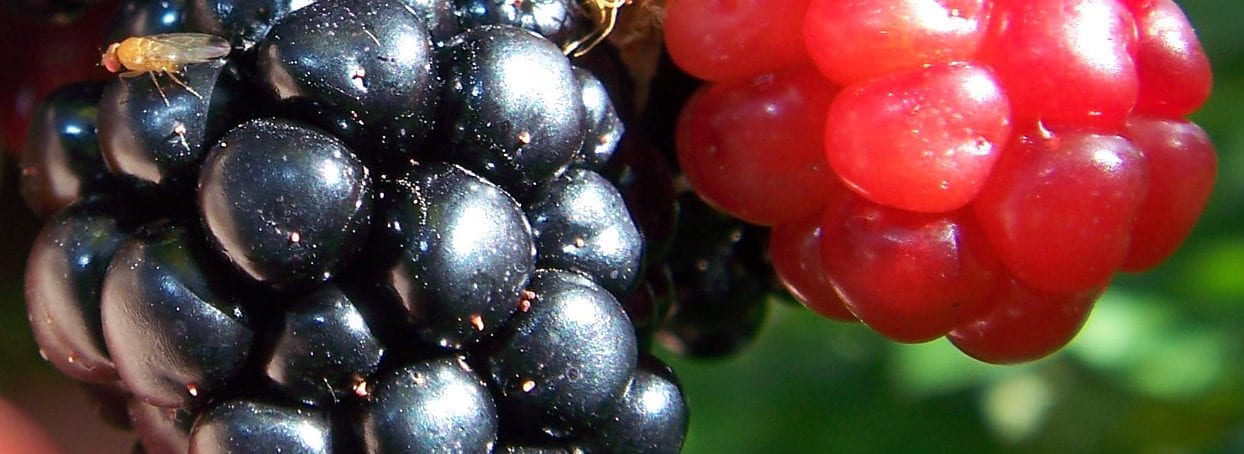SWD (Drosophila suzukii) is found all over New York state and is a pest to gardeners and fruit growers alike. If you have raspberries, blackberries, or blueberries likely you already have SWD in your bushes. SWD is native to Asia and was discovered in California raspberries in 2008. It gets its name from the spot on the wings of the males.
Cornell Cooperative Extension of St. Lawrence County, with the help of two Master Gardener Volunteers (Ken Kogut and Nancy Alessi), participates in a monitoring program for SWD through the New York State Integrated Pest Management (NYSIPM) Program https://blogs.cornell.edu/swd1/category/swd-info/
This year traps were set on July 6th with first catch on July 13th and sustained catches at two locations on July 20th with all locations trapping SWD by this date too. 2022 saw our first catch on July 28th with sustained catches in three locations on August 4th. Researchers suspect that it is because of our mild winter that more adults were able to survive and that is why we are seeing these pests earlier this year.


Read more Sustained Catch of Spotted Wing Drosophila (SWD) in St. Lawrence County

